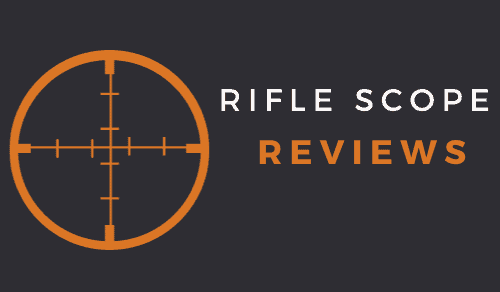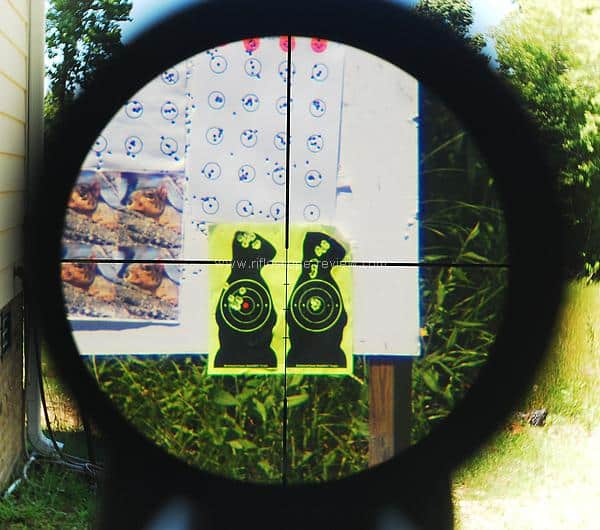As an Amazon Associate I earn from qualifying purchases. Amazon and the Amazon logo are trademarks of Amazon.com, Inc, or its affiliates.
If you’ve done any scope shopping so far, then you’ve probably already figured out that there are nearly as many reticle options on the market as there are rifle scope options. And, that number continues to grow as rifle scope brands continue to introduce more specialized reticles for specialized shooting applications. Now, if you compare the current reticle options available to what was on the market 20 years ago, the number of reticle choices has probably multiplied 10-fold. When I was a teenager, one of my Uncles became part owner of a small gun store in the eastern part of NC. Whenever my family went to visit him, I would spend a great deal of time at the store (cause guns always fascinated me ????). Back then, I can remember looking through all the different scope models in his scopes display and seeing nothing but duplex reticles. My how times have changed….
Now, if you compare the current reticle options available to what was on the market 20 years ago, the number of reticle choices has probably multiplied 10-fold. When I was a teenager, one of my Uncles became part owner of a small gun store in the eastern part of NC. Whenever my family went to visit him, I would spend a great deal of time at the store (cause guns always fascinated me ????). Back then, I can remember looking through all the different scope models in his scopes display and seeing nothing but duplex reticles. My how times have changed….
Although there are probably hundreds (maybe even thousands) of different reticle choices on the market today, most all of them are a variation that is based on one of these four base reticle styles:
 |
 |
 |
 |
| Duplex Reticle | Crosshairs Reticle | Mil-Dot Reticle | German #1 Reticle |
Most all the reticles that you currently see on the market are some variance or modification of those 4 base reticles.
Let’s take a look at the pros and cons of some of the more popular reticle styles:
Duplex reticle – The duplex style reticle is one of the oldest reticle styles out there and dates back into the early 1900s. The style is one of the easiest to use but does not feature any ranging or bullet drop capability, making it very popular for hunters. This style really isn’t a good choice for long range shooting or long-range hunting, as the shooter would have to manually estimate any hold-over without a reference point in the scope.
Crosshair reticle – The crosshair style reticle is basically a duplex design with very thin lines. It was originally designed to allow for more precise target style shooting and remains a popular option today. Many times, you’ll see the crosshair design offered in conjunction with a small dot in the center for target shooting. You’ll sometimes see the crosshair reticle offered in variations called Fine or Thin as well.
Mil-Dot reticle – The mil-dot reticle has been around for quite awhile and has been adopted by many military and law enforcement organizations. This reticle features a typical crosshair type set-up with small dots that are mounted at milradian intervals along both crosshairs. Mil-dots are a range finding reticle that allows the shooter to both estimate range based on the height and width of the mil-dots covered by the target. The dots also allow the shooter to compensate for both hold-over and wind-drift at various ranges.
German #1 or #4 – Like the name implies, these reticle styles were invented and popularized in Germany, and were a favorite of German snipers through WWI and WWII. This style has no crosshairs, only using a main post and side posts to frame the target. While this reticle is an option for larger game, it doesn’t really work well for precision type shooting at longer distances. The German #4 and #1 reticles are very popular on low powered scopes that are designed for hunting very large game at close ranges as the style is good for quick target acquisition and for shooting with both eyes open. Those types of scopes and reticles are popular for professional guides in Alaska and Africa when dealing with dangerous game.
MOA reticle – Primarily designed for long range shooting (much like the Mil-Dot reticle) a MOA reticle uses hash marks on the vertical and horizontal axis’s. Those hash marks correspond to a “minute of angle” which varies based on the distance. Knowing the range and base details of the MOA reticle, a shooter can see their hits on a target, and then dial the scope based on the MOA reticle to get on target.
Dot reticle – Don reticles are usually seen in one of two configurations:
(1) Very fine crosshairs with a small dot in the center where the crosshairs intersect.
(2) A small dot without any crosshairs
The dot reticle is a popular option for target shooting where the targets are very small or require a very precise level of accuracy.
BDC reticle – BDC is an acronym for “Bullet Drop Compensating”. BDC reticles typically have a set of crosshairs with small circles that run just under the crosshairs down the vertical axis. Most of these reticles have two to three of these circles and each of these circles equates to shooting at a predefined longer range. For example, if the crosshairs are zeroed to 100 yards, then the next circle down equals 200 yards, and the 2nd circle down equals 400 yards, etc. Also, some of the BDC reticles are configured to work with specific rifle cartridges.
Illuminated reticle – Most any of the reticles that are currently available in the market may also be available in an illuminated version. Illuminated reticles can be a blessing and a curse. In low light shooting situations, they are very advantageous, but it comes at a price. That price is the additional weight on the scope associated with the electronics to run the illumination and the issue of battery life that powers the illumination.
What’s your favorite reticle, and what do you recommend?
The answer really depends on what type of shooting I’m doing. However, if you said, you can only choose one (1) reticle as your favorite, my answer would be a Mil-Dot reticle. I find the Mil-dot set-up versatile enough to use for hunting, short- and long-range targets, and most anything in between.
The answer to what I recommend really depends on a number of factors, but the big question is what type of shooting/hunting are you going to be using the rifle for?
- If the answer is short range hunting with shots in the 100 to 300 range, then the duplex is hard to beat as it’s simple and easy to use.
- For long range shooting or hunting, I’d look hard at something with a mil-dot reticle. Or, if you prefer something more precise at long range, a MOA based reticle.
- For precision target work, at a fixed range, I’d consider a thin crosshair.
- Short range hunting with shots under 100 yards, I’d look at either a duplex or the German #4 reticle.
If you aren’t sure, spend some time looking around as I’ve only covered a small fraction of the reticle options on the market these days.
I’ve been working in the firearms and sporting optics industry for over 20 years, with a personal and professional interest in all things related to rifle scopes, Through a combination of work experience, formal training, and personal experiences, I have extensive experience mounting, testing, and evaluating different rifle scope models across most major optical brands.


